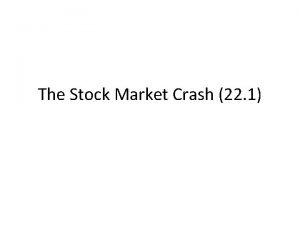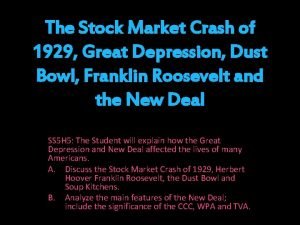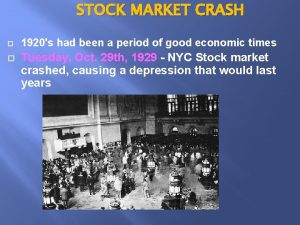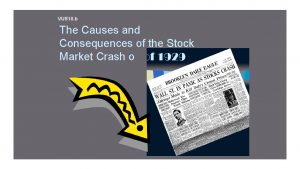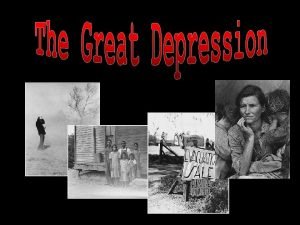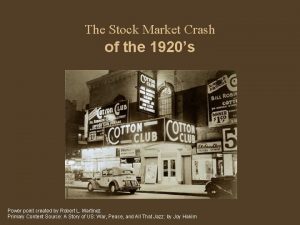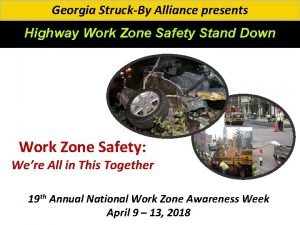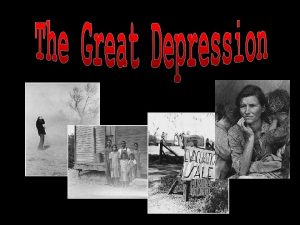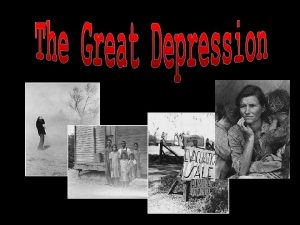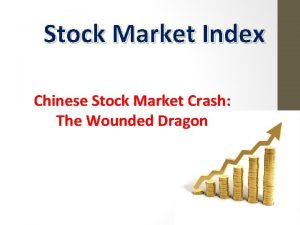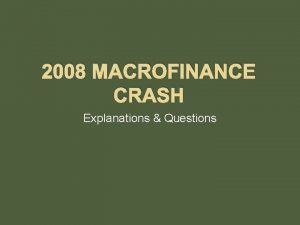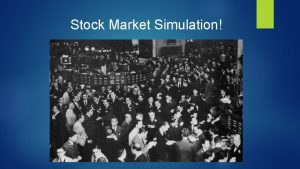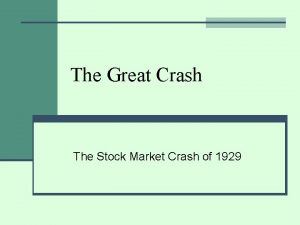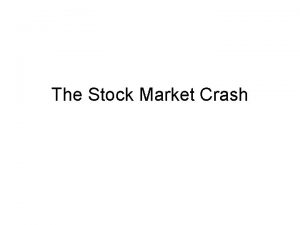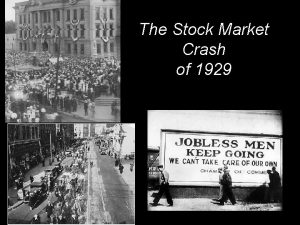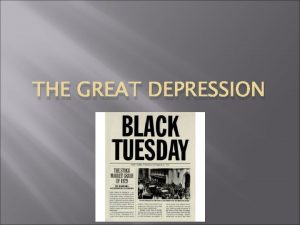22 1 Stock Market Crash The Market Crashes











- Slides: 11

22. 1 Stock Market Crash

The Market Crashes l Early 1928 Dow Jones climbed to 191. l By Sept. 3, 1929 it reached all time high of 381. l Prices for stocks soared above their actual value in terms of the companies earnings and assets.

l After peak in Sept. prices began to decline slowly. l On Black Tuesday , Oct. 29, 1929, 16. 4 mill shares were sold (avg. before was 4 to 8 mill a day). l By Nov. 1929 overall losses totaled $30 bill. l This was part of nation’s business cycle.

Ripple Effect of the Crash l By 1929 4 mill people were involved in stock market out of about 120 million. l About 3. 3% of pop.

Why Hurt Whole Country l 1. Risky Loans Hurt Banks l 2. Consumer Borrowing l 3. Bank Runs l 4. Bank Failures l 5. Savings Wiped out l 6. Cuts in Production

l 7. Rise in unemployment l 8. Further cuts in production l This was called an economic contraction-falling output of goods and services. l Long contraction=depression l Great Depression-1929 -1941

Impact on Workers and Farmers l August 1931 Henry Ford shut down his Detroit factories, 75, 000 people out of work. l 1929 bushel of wheat sold for $1. 18 in 1932 dropped to a mere $. 49?

l By 1932 12 mill people were unemployed (1/4 of labor force). l GNP fell from $103 bill in 1929 to $56 bill in 1933. l France and Britain had large WWI loans to pay back to U. S. l Allies relied on German reparations to pay U. S.

l Germany depended on U. S. for investments. l With depression investments fell off. l Nobody could pay anybody, vicious cycle.

Underlying Causes of the Depression l Stock market crash of ’ 29 did not cause the depression alone. l Uneven prosperity of 1920’s made rapid recovery impossible. l People were buying stocks on margin-paying little or nothing down. Expected returns to pay debt.

l Federal Reserve began to limit the money supply in the ’ 29 to limit over speculation. l Result-too little money in circulation to recover from the Great Crash.
 Stock market crash def
Stock market crash def Stock market crash in 1929
Stock market crash in 1929 Black friday stock market crash
Black friday stock market crash Black sunday stock market crash
Black sunday stock market crash Stock market political cartoon
Stock market political cartoon Fun facts about the stock market crash of 1929
Fun facts about the stock market crash of 1929 550wgr
550wgr Stock market crash 1942
Stock market crash 1942 Vus.10b when was the stock market crash?
Vus.10b when was the stock market crash? Stock market crash
Stock market crash Stock market crash
Stock market crash Most work zone crashes
Most work zone crashes


